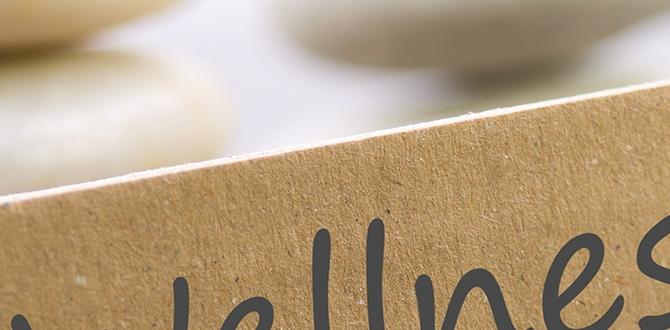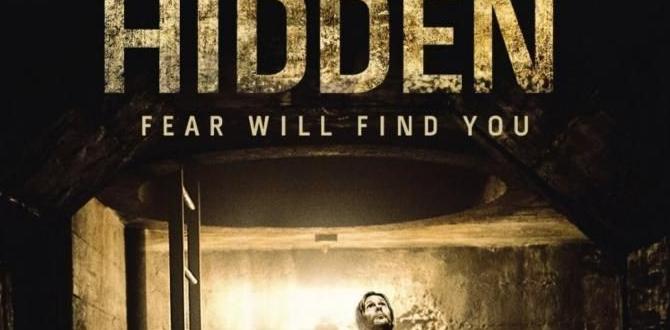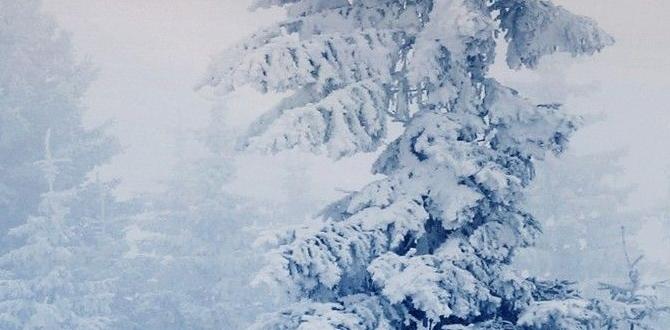Want stunning Atacama Desert photos without the hassle? Learn the best, often-overlooked spots for breathtaking Instagram content. This guide reveals how to capture the magic of Chile’s driest desert with simple tips for picture-perfect, crowd-free moments. Get ready to make your feed shine!
The Atacama Desert can feel like another planet. Its landscapes are so dramatic, so otherworldly, that they practically beg to be photographed. From vast salt flats to steaming geysers and vibrant flamingo-filled lagoons, the photographic opportunities are endless. But let’s be honest, sometimes the most iconic spots can get a bit crowded, making it tough to get that perfect, serene shot for your Instagram feed.
You might feel frustrated if you’re juggling camera gear, dealing with tour groups, or just can’t find that unique angle. Don’t worry! Capturing the untouched beauty of the Atacama without the crowds is totally achievable. This guide will walk you through secret spots and smart strategies so you can create “effortlessly perfect” photos that truly stand out.
Discovering the Atacama’s Photographic Gems
The Atacama Desert, often hailed as the driest place on Earth, offers a surreal canvas of colors and textures. Its unique environment has sculpted landscapes that are unlike anywhere else. Think of the stark beauty of the Moon Valley, the shimmering expanse of the Salar de Atacama, or the vibrant hues of the high-altitude lagoons.
While popular sites like these are incredible, finding your own slice of serenity can elevate your travel photos from good to absolutely unforgettable. It’s about more than just snapping a picture; it’s about capturing the feeling of being in this magical place.
Beyond the Postcards: Lesser-Known Instagram Spots
While the Valle de la Luna (Moon Valley) and El Tatio Geysers are undoubtedly breathtaking, they can get busy, especially during peak hours. To capture the essence of Atacama with a sense of solitude, consider exploring these less-trodden paths or visiting popular spots at unconventional times. The goal is to find those moments of quiet beauty that truly reflect the desert’s spirit.
Laguna Cejar (Early Morning/Late Afternoon): While famous for its buoyancy, visiting Laguna Cejar just after sunrise or before sunset can offer softer light and fewer people. The ethereal glow on the water is simply magical.
Piedras Rojas (Salar de Aguas Calientes): Often visited on tours, but by arriving slightly earlier or later than the main groups, you can enjoy the stunning contrast of the red rocks against the turquoise lagoon without a crowd. The mineral deposits create a surreal, vibrant scene.
Valle de la Luna at Sunset (Off the Beaten Path): Instead of staying at the main viewpoint, explore some of the smaller, less accessible trails within the valley. Pack a small tripod and headlamp to capture the changing colors as dusk settles, often with only a few other photographers around.
Salar de Tara (Requires 4×4 and Guide): This is a more adventurous option, requiring a guided tour. However, the sheer scale and unique rock formations (“Los Moines”) offer unparalleled photographic opportunities with very few people. It feels like stepping onto another planet.
The Ghost Towns (e.g., Chacabuco): Scattered throughout the region are abandoned nitrate mining towns. These historical sites offer a hauntingly beautiful backdrop for photos, with peeling paint, rusted machinery, and palpable history. They are rarely crowded and tell a silent story.
Timing is Everything: Beat the Crowds for Perfect Shots
One of the simplest ways to achieve “effortless perfection” in your photos is by mastering the timing. The Atacama experiences dramatic shifts in light and visitor numbers throughout the day.
Sunrise Magic: Many tours depart later in the morning. Be an early bird and head out for sunrise at a location like Valle de la Luna or even near San Pedro de Atacama itself. The soft, golden light is perfect for landscapes, and you’ll likely have the place mostly to yourself.
Golden Hour Glory: This refers to the period shortly after sunrise and before sunset. The light is warm, soft, and casts long shadows, creating depth and mood in your photographs. This is crucial for capturing the desert’s textures.
Midday Avoidance: While some attractions like El Tatio Geysers are best visited very early, many others can be harsh under the midday sun. If you must photograph during this time, look for shade, focus on details, or embrace the high contrast for a dramatic effect.
Night Photography: The Atacama is renowned for its clear night skies, making it one of the best places in the world for stargazing and astrophotography. Embrace it! Consider a night tour focused on photography or find a safe, dark spot away from town lights.
Essential Gear for Atacama’s Instagram Worthy Shots
You don’t need a professional studio to get amazing photos. A few key pieces of gear can make a big difference, and importantly, can be packed without adding excessive bulk to your luggage. Comfort and practicality are key when you’re traveling, especially if you’re managing essentials like adult or child diapers for longer journeys. Having reliable products means you can focus on the experience, not worry about discomfort.
For your camera, a smartphone with a good camera is often enough, but a dedicated camera offers more control. Here’s a breakdown of what can elevate your Atacama photography:
Photography Essentials Checklist
Camera: A smartphone with a good camera, a compact mirrorless camera, or a DSLR.
Lenses (if applicable): A wide-angle lens is fantastic for sweeping desert landscapes, while a telephoto can isolate interesting details.
Tripod: Essential for low-light photography (sunrise, sunset, night sky) and for sharp, steady shots. A lightweight travel tripod is ideal.
Extra Batteries & Power Bank: The desert sun can drain batteries quickly, and you’ll want to keep your phone charged for navigation and sharing.
Memory Cards: Always have more than you think you’ll need.
Lens Cleaning Cloth: Dust is everywhere in the desert!
Neutral Density (ND) Filters: Useful for long exposure shots, like smoothing out water in lagoons or clouds in the sky during the day.
Portable Hard Drive or Cloud Storage: For backing up your precious photos as you go.
Comfort on the Go: Ensuring Stress-Free Exploring
When you’re exploring vast, arid landscapes, comfort is paramount. This is where reliable personal care items come into play. For parents traveling with little ones, having discreet, absorbent child diapers means fewer disruptions and more enjoyable excursions. Similarly, for adults needing extra protection, discreet adult diapers provide peace of mind, allowing you to focus on the breathtaking scenery rather than potential concerns. Brands offering breathable and leak-proof options can make all the difference on long days of sightseeing.
Packing wisely includes considering all your needs. For peace of mind on any trip, ensuring you have high-quality, reliable products like adult diapers or child diapers can prevent discomfort and allow you to fully immerse yourself in the travel experience.
Capturing Hauntingly Beautiful Sunsets and Sunrises
The Atacama’s sunsets and sunrises aren’t just colorful; they paint the entire landscape in hues of orange, pink, and purple. These are prime times for photographers, and with a little planning, you can find serene spots to witness and capture this daily spectacle.
Sunset Spotting Strategy
Valle de la Luna (Valley of the Moon): This is the classic choice for a reason. Head to the ‘Piedra del Coyote’ viewpoint for an iconic panorama. To avoid the biggest crowds, consider walking a short distance along the rim or exploring slightly smaller, unnamed viewpoints within the valley if accessible by your tour or vehicle. The way the light transforms the dunes and rock formations is breathtaking.
Mirador de Kari (near San Pedro): Offers a panoramic view of the surrounding volcanoes and salt flats. It’s often less crowded than Valle de la Luna and provides a spectacular, expansive sunset vista.
Altiplanic Lagoons at Dusk: While tours often leave before sunset, if you have a private guide or your own vehicle, staying a bit longer at Miscanti and Miñiques lagoons as the sun dips can offer incredible, tranquil shots with soft, diffused light.
Sunrise Seeker’s Guide
El Tatio Geysers: This is a very early morning activity (around 4-5 AM departure from San Pedro). While the geysers themselves are the main event, the landscape in the pre-dawn light, with steam rising against a darkening sky, is incredibly atmospheric. The crowds dissipate somewhat after the main geyser activity.
Salt Flats and Volcanoes: Early morning light hitting the vast salt flats or the snow-capped peaks of volcanoes like Licancabur creates stunning silhouettes and gentle, warm tones. Find a safe pull-off spot on a road heading east of San Pedro. The sky often puts on a show before the sun even crests the horizon.
The Magic of Astrophotography in the Atacama
The Atacama Desert’s exceptionally clear skies and high altitude make it a premier destination for stargazing and astrophotography. If you’re looking to capture mind-blowing images of the night sky, this is your chance.
Getting Started with Night Sky Photography
1. Location, Location, Location: Get as far away from San Pedro de Atacama as possible. Light pollution from towns can significantly impact your photos. Look for dark, open areas. Many tours take you to dedicated observatories or dark sky sites.
2. Gear Up: You’ll absolutely need a tripod for stability. A camera with good low-light performance (high ISO capability) and a wide-angle lens with a fast aperture (f/2.8 or wider) are ideal.
3. Camera Settings:
Manual Focus: Set your lens to manual focus and focus on a bright star or a very distant light source. Infinity focus is often marked on lenses, but fine-tuning is usually necessary.
Aperture: Use your widest aperture (e.g., f/2.8).
Shutter Speed: Experiment with shutter speeds between 15-30 seconds. Anything longer can cause star trails due to the Earth’s rotation.
ISO: Start with ISO 1600 or 3200 and adjust based on your camera’s performance and desired brightness.
4. Composition: Include the striking desert landscape in your foreground. A lone cactus, a rock formation, or even the silhouette of a vehicle can add depth and scale to your Milky Way shots.
For a truly immersive experience, consider booking a specialized astrophotography tour. These tours often provide expert guidance, access to prime locations, and sometimes even telescopes for viewing!
Photographing Wildlife: Flamingos and Beyond
While the stark landscapes are the main draw, the Atacama is also home to unique wildlife, most famously, flamingos. Capturing these elegant birds against a dramatic backdrop can result in truly iconic images.
Tips for Wildlife Photography in the Atacama
Lagunas Altiplánicas (Miscanti and Miñiques): These high-altitude lagoons are frequented by three species of flamingos. Visit during the day, but try to catch the golden hour light for softer, more flattering illumination on the birds and the scenery.
Salar de Atacama: The vastness of the salt flat offers opportunities to spot flamingos in their natural habitat. Keep an eye out near water sources and salt lagoons.
Patience is Key: Wildlife photography requires patience. Find a good vantage point and wait for the birds to come to you or engage in natural behaviors.
Use a Telephoto Lens: If you have one, a telephoto lens (or your camera’s zoom function) will allow you to get close-up shots of the flamingos without disturbing them.
Respect Their Space: Always maintain a safe distance and avoid making loud noises or sudden movements that could scare the animals. The goal is to capture them naturally, not to stress them out.
Other Wildlife: Keep an eye out for vicuñas (a type of camelid), vizcachas (rabbit-like rodents), and various birds of prey as you explore.
Essential Planning for Your Atacama Photo Adventure
A bit of preparation goes a long way in ensuring your trip is smooth and your photography goals are met. This includes everything from booking tours to packing the right essentials.
Pre-Trip Checklist
Book Accommodation: San Pedro de Atacama is the main hub. Book well in advance, especially during peak seasons.
Arrange Transportation: Decide if you’ll rent a 4×4 for more freedom or rely on organized tours. Many of the best spots are only accessible with guided tours.
Tour Selection: Research tour operators for flexibility, small group sizes, and photography-friendly schedules. Look for tours that avoid the busiest times.
Physical Preparation: The altitude can affect some people. Acclimatize slowly, drink plenty of water, and avoid strenuous activity on your first day.
Clothing: Pack layers! Days can be hot, but nights are very cold. Sun protection (hat, sunscreen, sunglasses) is non-negotiable.
Packing Smart for the Desert
Beyond your camera gear and comfortable personal care items, here are a few more things to pack:
Reusable Water Bottle: Staying hydrated is crucial.
Snacks: Especially for long day trips.
Comfortable Walking Shoes: You’ll be doing a lot of exploring.
Daypack:** To carry essentials like water, snacks, sunscreen, and your camera.
Conclusion
The Atacama Desert is a photographer’s paradise, offering landscapes so surreal they hardly seem real. By understanding the best times to visit, exploring beyond the most crowded viewpoints, and packing the right gear, you can effortlessly capture “perfect” shots that tell the story of your incredible journey. Remember that a great photo isn’t just about the location, but also about the light, the composition, and the feeling you convey.
Don’t forget to also consider your personal comfort needs—whether it’s reliable child diapers for younger travelers or discreet adult diapers for enhanced peace of mind—to ensure your focus remains on the extraordinary beauty surrounding you. With these tips and strategies, your Instagram feed will soon be filled with breathtaking images that capture the unique magic of the Atacama. Happy shooting, and may your adventures be both comfortable and incredibly photogenic!
Frequently Asked Questions
Q1: What is the best time of year to visit the Atacama Desert for photography?
The Atacama Desert is generally a year-round destination. However, the shoulder seasons (March-May and September-November) often offer pleasant weather, fewer crowds, and good light conditions for photography. The high-altitude lagoons are typically fullest from December to March.
Q2: Are there any specific photo permits required for popular Atacama spots?
For most common tourist attractions like Valle de la Luna and El Tatio Geysers, standard entrance fees cover photography. However, for professional commercial shoots, specific permits might be necessary. It’s always best to check with local tour operators or the national park authorities if you plan extensive professional work.
Q3: How can I charge my camera and phone batteries in remote areas?
Bringing a reliable power bank is essential for charging devices on the go, especially during long day trips. Many accommodations in San Pedro de Atacama have charging facilities. For longer trips or more remote explorations, solar chargers can also be an option.
Q4: What are the biggest challenges for photographers in the Atacama?
The main challenges include intense sunlight, dust, high altitude, and potential crowds at popular spots. The dry air can also be tough on equipment, so keeping lenses clean and protected is vital. The extreme temperature fluctuations between day and night also require mindful gear preparation.
Q5: Is it safe to travel solo in the Atacama Desert for photography?
Yes, the Atacama is generally considered safe for solo travelers. However, it’s always wise to inform someone of your itinerary, stick to marked trails, and book tours with reputable companies for excursions into remote areas. Never venture off-road alone in the desert.
Q6: Can I use drones for photography in the Atacama?
Drone regulations can be complex and are subject to change. While some areas might permit drone use, others, especially those near observatories or within national parks, may prohibit them due to interference with scientific equipment or for preservation reasons. Always check current regulations before flying a drone.
Q7: What are the best settings for shooting landscapes in the Atacama?
For landscapes, you’ll want to utilize a smaller aperture (f/8 to f/16) to ensure a large depth of field, meaning more of your scene will be in focus. Use a tripod to achieve sharp images, especially during the golden hours when light is softer. Consider using a polarizing filter to enhance colors and reduce glare from salt flats and rocks.






